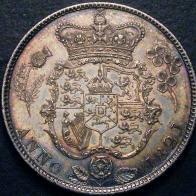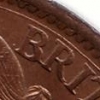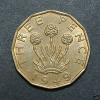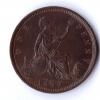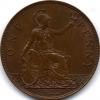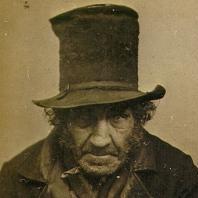|
|
The current range of books. Click the image above to see them on Amazon (printed and Kindle format). More info on coinpublications.com |
|
|
Leaderboard
Popular Content
Showing content with the highest reputation on 12/20/2019 in all areas
-
3 points
-
2 points
-
2 pointsThe human race is unbelievably arrogant, granting ourselves "human rights" that even overrule the basic rules of society sometimes and deciding that other "lesser" species on the evolutionary scale are worthy of preservation for the purposes of entertainment or sustenance.
-
1 pointOne of Only Two Known Surviving 1945 Silver Threepence Coins Surfaces Posted on 12/10/2019 The silver coin, the “rarest British circulating coin in 200 years,” was one of 371,000 minted that year, all of which were supposed to have been destroyed. The “rarest British circulating coin in 200 years” has been certified as genuine by Numismatic Guaranty Corporation® (NGC®), the world’s largest third-party certification, grading and encapsulation service for rare and collectible coins. The tiny silver coin — only the second known example — was not discovered in a buried hoard. The 1945 Silver Threepence was found in an ordinary Whitman folder, the type of cardboard booklet that young coin enthusiasts have filled with coin collections since the 1930s. This 1945 Great Britain Silver King George VI 3 Pence was authenticated and graded NGC MS 63 by the third-party grading service Numismatic Guaranty Corporation. It is scheduled to be auctioned in March 2020 with an estimate of £15,000 to £25,000 (about $20,000 to $30,000 USD). Click images to enlarge. The coin had been removed from the Whitman folder and placed in a similarly humble plastic envelope, or flip, when it was brought to Baldwin’s of St. James’s, managing director Stephen Fenton said. But it caused an immediate sensation even so. “It was a coin I’d looked for for 50 years,” Fenton said. “I regard this as the rarest British circulating coin for 200 years. “You see lots of rare coins, but this is something I’ve always hoped to see someday. It’s amazing proof that the rarest coins can emerge from the most humble of places.” Though the Nazis showered London with V-2 rockets in 1945, it was a more mundane reason that led to the 1945 Silver Threepence coin becoming almost extinct. The Silver Threepence had become unpopular because it was very small — a diameter of 16 mm (six-tenths of an inch) and a weight of 1.4 grams (five-hundredths of an ounce). A bigger, heavier, 12-sided nickel-brass threepence had been introduced in 1937 and was being minted every year. The King George VI Silver Threepence was minted from 1937 to 1945, with a peak production of almost 8 million annually in 1940 and in 1941. But the wartime issues of 1942-45 all were shipped to the British West Indies. And the output of the coin’s final year of 371,000 — apparently deemed redundant because of public acceptance of the 12-sided nickel-brass coin — was ordered to be melted down, its silver used in other mint products. Every 1945 Silver Threepence was supposed to have been reduced to ingots, their inscriptions and profile of the king on the obverse and a St. George’s cross over a Tudor rose on the reverse, destroyed. But at least two coins escaped the crucible, and more of them might be sitting in jars or Whitman folders, waiting to be recognized for the rarities they are. One survivor came up for auction in April 1970 at a Glendining & Co. of London sale. Its condition was described in the catalog as About Very Fine and it realized £260 (about £4,000 pounds in today’s money). Its buyer is unknown, and the coin has not resurfaced publicly since. The newly found coin was certified by NGC and graded MS 63 on the 70-point Sheldon Scale. The condition of the coin found earlier is thought to grade a much lower 20 to 35 on the scale. “I had no doubt that this coin was genuine,” Fenton said. “But NGC certification will ensure that everyone has the same confidence.” The new example is being offered at a Baldwin’s of St. James’s auction scheduled for March 2020, with an estimate of £15,000 to £25,000 ($20,000 to $30,000 USD), Fenton said. How did it survive? The owners, who Fenton declined to name, said they received the Whitman folder containing the coin from a relative who worked at the Royal Mint. For more information about Baldwin’s of St. James’s, go to bsjauctions.com/ Viewing at %
-
1 point
-
1 pointImagine that, the end of TPGC’s and their meaningless population reports....every cloud (or rock)😉
-
1 pointYes - unfortunately the only real answer to global warming, destruction of habitats and extinction of non-human species is to reduce the human population to less than a tenth of it's current figure. I can't see that winning many voters at an election though...
-
1 pointPersonally I and the planet are eagerly awaiting the next ELE space rock. Perhaps that migh make any survivors reconsider how important this rock in space actually is. It'd probably screw the coin market though, but it would also shake up the governments all across the globe
-
1 pointThen we must agree to disagree, Chris. Trouble is these political threads are started, and people inevitably post their opinions on them, which they are free to do. We all think differently. Maybe we should make a joint agreement between the two of us to avoid them in future - what say you? I mean, I can't say I'd be especially bothered about avoiding politics on here.
-
1 pointThis forum reflects society, and has become politically polarised by the events of the last three years just as society in general. The degree of offence taken regarding a particular statement reflects the readers views and sensitivities, which may not be the same as those who give the opinion. We have to be tolerant of opposing views; we/I find it easy to be riled by what others post, but that is our/my problem not theirs, we are free to think what we want, and should stop using our own views as an excuse to be nasty to each other. We will never all agree. I have friends who want to ‘save the planet’ , and feel the only way to do so is by green technology and stopping war and famine. I also want to ‘save the planet’ but suspect that a 95% reduction in the human population is the only realistic way to achieve this. Clearly I would prefer nature in some way to arrange this, and the elimination of Donald Trump would be a good start. Eventually I reckon the planet will be just fine, but not the human race and many other species, yet another great extinction to be followed by further evolution , whatever direction that takes. I think it is ridiculous to think that the human race somehow deserves perpetuity, yet of course I love my kids and grandkids. My late father was pretty pragmatic regarding the pointless, unpleasant, self-cantered creatures humans are. But he loved nature and devoted his life to its conservation. You can read his obituary here https://www.theguardian.com/environment/2019/dec/04/peter-davis-obituary and he will shortly feature in radio 4’s ‘Last words’ obit programme and in British Birds. Forgive me for being a bit maudlin , I had a couple of pints tonight. Jerry
-
1 pointWould be nice if PCGS and NGC would actually use the term "technical MS" in their grading. "Technical" meaning you must look at the coin in hand or you will be in for a surprise.
-
1 pointYes, I always thought it a little strange that they didn't do a crown for 1911!
-
1 point
-
1 pointThe round "Dot" phenomena was investigated when it occurred on Australian bronze coins. It was concluded that the round dots were produced from dies that had rust pockets produced by water droplets.
-
1 pointTo me, the concepts of a raised dot (caused by a circular "dent" in the die) and a die crack don't go together. I can't see how a die crack could lead to a clean dot. Far more likely that a "particle" found its way onto the surface of the heated and softened working die while it was being created and produced the indentation ?
-
1 pointThe jury's still out on the 1897 Dot . it was at first thought to be a identification marker , but its now thought to be the result of an indentation made on the top of the die , thereby giving a neat full stop like appearance . As to the Vigtoria Richard doesn't show this close up picture on his site , and as you can see the G looks far to neat in shape to be the result of a die crack, so I would favour the over stamped G made in error as the most likely cause , as the font punch used it could have come from dies used on different denominations or from a foreign coin type being produced at the mint.
 Coinpublications.com
Coinpublications.com
